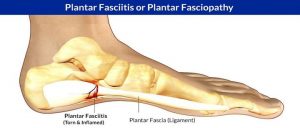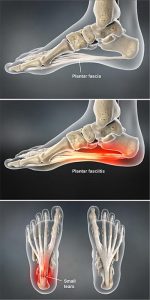When plantar fasciitis occurs, the most typical main complaint of a patient is “When I get out of bed, I can’t stand the pain in my heel!” This is also an indicator of a doctor’s differential diagnosis.
Common causes of plantar fasciitis:
1. Overweight
2. I often walk on uneven roads and love to walk on the healthy trails in the park
3. Like climbing and jogging
Although the pain is uncomfortable, and some people have been treated for a long time without getting better, the good news is that with patient treatment, 90% of plantar fasciitis patients can be greatly improved after conservative treatment.
The key point is to find out the inappropriate lifestyle habits that cause plantar fasciitis and get rid of it. “These patients with plantar fasciitis have improper use,” said Zhong Peizhen, director of the Rehabilitation Department of Taiwan Adventist Hospital, in an increased tone. Heavy objects… etc. may cause injury to the plantar fascia. “Many patients only feel that one side of the pain is all right, and they continue to brace themselves. On the contrary, to avoid the pain, the burden on the other foot is heavier. Plantar fasciitis is all there,” Zhong Peizhen shook her head.
If symptoms of plantar fasciitis occur, the first thing to do is rest, do not move heavy objects, walk shortly, stop climbing, jogging, and other sports. Other conservative treatments include the following methods:

■Drug treatment: oral non-steroidal anti-inflammatory analgesics, injection of steroids. Zhong Peizhen said that many patients refuse to take medicine and use strange postures to avoid pain, but other injuries will be extended. Taking medicine will relieve the pain of the patient, but will not forget the pain. You can always remind your feet to rest.
Some doctors will administer steroids to patients, but Zhong Peizhen said that in the past she would also administer injections to patients, but with a dozen steroids, the pain will disappear quickly, and patients will easily forget that the injury is still there and continue to wear the plantar fascia, and the condition will be reversed. deterioration.
■Physiotherapy. Including ultrasound and shortwave, these two tools help tissue regeneration by physically generating heat energy.
■ Plantar fascia stretching exercises. Hold the edge of the table with your hands, lunge, and slowly lean forward, keeping your heels on the ground for 5 to 10 seconds, 2 to 3 times a day. Or make a triangular box with a height of about 10 cm, with the hypotenuse longer than the length of your own feet, and place it on the wall. Hold the wall, stand on the hypotenuse, hold for 5-10 seconds, repeat 5-10 times to stretch the plantar fascia.
■ Tailor-made insoles. In many patients, the structure of the feet has been deformed and the arches of the feet have disappeared. Tailor-made insoles are needed to prop up the arches to prevent the collapsed arches from continuously pulling on the plantar fascia.

■Hot compress. Patients can bubble hot water at home to increase blood circulation there. “Hot water is the easiest and most accessible treatment method. Everyone can do it. It’s just whether you want to do it or not,” said Zhong Peizhen.
■Bone shock wave
For patients with long-term conservative treatments that are not effective and have been plagued by plantar fasciitis for many years, the bone shock wave that has appeared in recent years is a treatment that can be tried.
Li Wenji, who has administered bone shock waves to nearly two thousand patients, explained that bone shock waves are developed from extracorporeal lithotripters of the kidneys and gallbladder, focusing the shock waves on the chronically inflamed or degenerated parts of the fascia and tendons. , The shock wave penetrating the tissue can make small gaps or small wounds there, but it will not cause invasive damage. It can help the capillaries enter the places with poor blood circulation, thereby helping the tissues to heal and regenerate. Current research shows that shock waves are effective in treating plantar fasciitis.
After the bone shock wave is applied, there is no need to be hospitalized, but the patient should not be overloaded with heels, which allows the tissues to regenerate. The shock wave effect is not immediate. Depending on the patient’s condition, most people can improve their pain after about 4 to 6 weeks.
■Endoscopic Fasciotomy
In addition to bone shock waves, patients with ineffective conservative treatments can also try endoscopic fasciotomy. An incision is made on the sole of the heel or from the side of the sole. Observe the appearance of the fascia from the endoscope to confirm that it is not a hemangioma. After pain caused by tumors such as lipomas, neurofibromas, and severe fascial fibrosis, a special knife can be used to cut the fascia laterally. The purpose is not to cut the fascia, but to relax the fascia, Li Wenji explained.

Zhong Peizhen reminded that if you need to perform surgery, you must consult different doctors and make sure you can only perform surgery when it is done.
